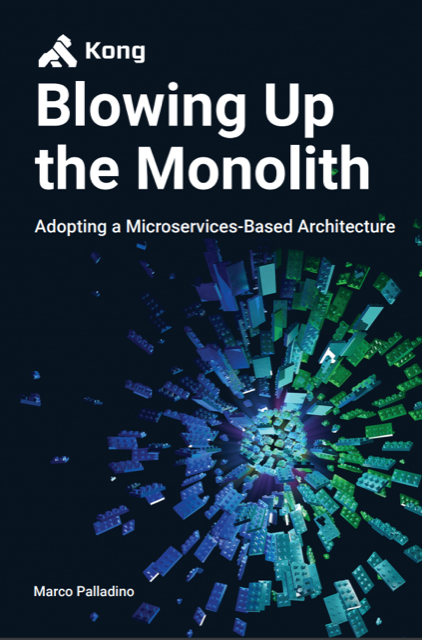Book review - free “Blowing up the Monolith” book from Kong.

[“Blowing up the Monolith”](https://konghq.com/wp-content/uploads/2018
/06/blowing-up-the-monolith-adopting-microservices-based-architectures.pdf) is a short read suitable for getting an overview of how to think about moving from a large monolithic application architecture towards micro-services.
Target Audience
This book is for any team that has an existing (legacy?) Enterprise application and are faced with the prospect of re-factoring it into a more modern architecture. Purely from a software architecture perspective, how do you start to think about that? This book will help set the stage. At 22 pages though, it’s not going to do anything more than that.
Pros and Cons
This book doesn’t really have any cons, except the fact it’s too short. It’s a free teaser, I think, for more in depth analysis. That said, it’s brevity is also what makes it powerful.
As I said, this is a short read. It’s just over 20 page and you can read it in 30 minutes or less. It jumps right to the point around the two main types of communication in micro-services (“service-to-service,” usually REST-like, and “asynchronous,” usually message-queue based). I like the discussion of strategies. I’ve used both the “ice cream scoop” and “lego” strategies and both can work in the right context. It’s useful to have terms for it. I’ve not seen the “nuclear” strategy work. In fact, some of my worst failures as software projects have used that approach. Not recommended.
The discussion of why not to rely on one database is very clear but I do wish it had gone into more detail about distributed databases. The libraries and security paragraphs are perhaps where I would fault the writing. A more detailed section on authentication and especially on circuit breakers would have made this book 1000x more powerful with little more effort.
This book barely touches the subject of containers/kubernetes (k8s). It hints at how using those technologies provides many useful features out of the box but with no detail. This is another area that I wish the book went into more depth.
Conclusion
Read this book. If you are a lead Engineer or Architect give this book to your manager. Even if he or she isn’t all that technical (anymore?) this will give you both a common set of terms and concepts to begin to understand how to plan your journey.
If this book were available in longer, more in-depth version I would surely pay for it.
